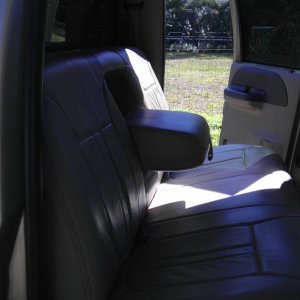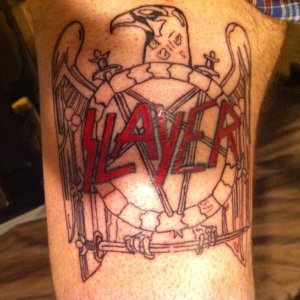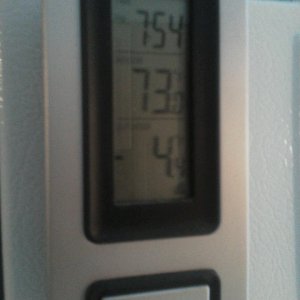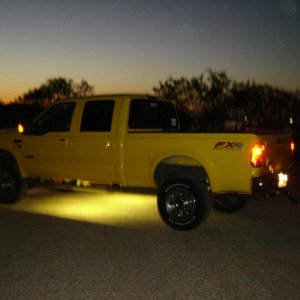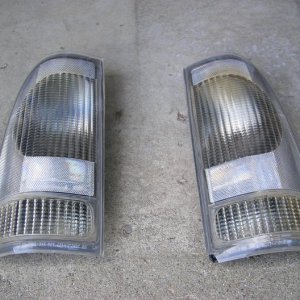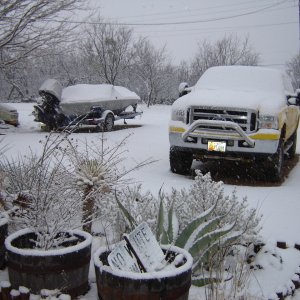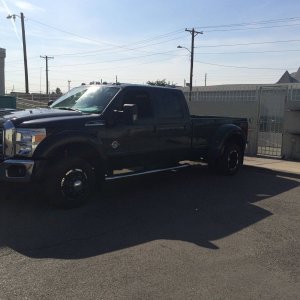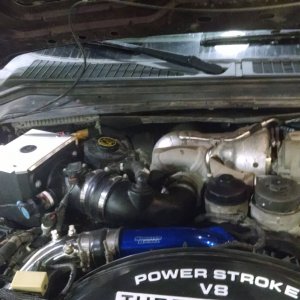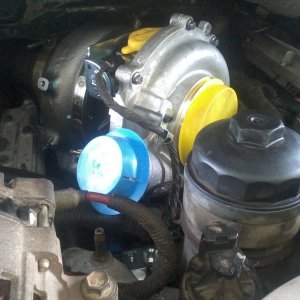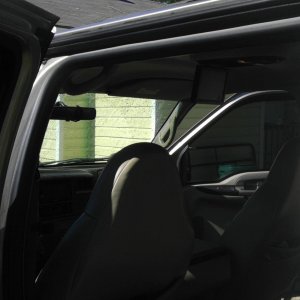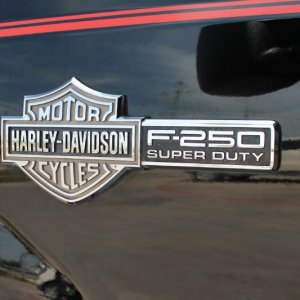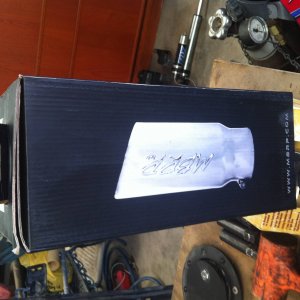1. Never clog another oil cooler
2. Separates oil and coolant paths to eliminate the possibility of ever contaminating your coolant with oil
3. Reduces overall coolant temps because the oil isn’t transferring heat to the coolant through the oil cooler
4. No coolant filter that MUST be maintained in order to have proper coolant flow
5. Only two additional hoses in the engine bay rather than several large new parts
6. OEM oil filter replaced with a canister style filter
7. Five additional quarts of oil capacity
8. Unsurpassed customer service
9. It fixes the problem instead of simply making it easier to replace another OEM oil cooler
Introduction / Background
Bulletproof Diesel. The name pretty much says it all. Lately, the term has become synonymous with any Ford 6.0L Power Stroke that has an oil cooler that’s been replaced, an EGR delete, and head studs. My 2005 F-250 was on its second oil cooler and I began seeing a significant difference between the Engine Coolant Temperature (ECT) and Engine Oil Temperature (EOT). This difference is commonly referred to as the delta (delta is a mathematical term meaning difference) and a delta of 15°F or more is a good indicator of a clogged oil cooler (according to Ford). If the oil cooler remains intact, the high EOT/ECT difference is a strong indicator that not enough coolant (not oil, but coolant) is flowing through the oil cooler to remove the heat from the oil. This is why you have such a large difference between the two temperatures. Since the coolant flows from the water pump through the oil cooler and then through the EGR cooler, this low coolant flow through the oil cooler means that you also have low coolant flow through the EGR cooler! This is the primary cause of EGR cooler failure: a plugged up/restricted stock oil cooler. This can lead to another common 6.0L problem: a ruptured/failed EGR cooler. A ruptured or leaking EGR cooler is a major cause of blown head gaskets. If not fixed in a timely manner, it’s possible to hydro lock the motor and bend rods or stretch the head bolts. Or, if you’re “lucky,” the oil cooler will rupture and contaminate your coolant with engine oil. Chemical coolant flushes and coolant filters have become popular with 6.0L owners, and while they may decrease the chances of clogging an OEM oil cooler, there are countless stories on the internet of people who have flushed their coolant, installed a new OEM oil cooler, and then clogged the new oil cooler within a short period of time.
I didn’t want to accept the fact that my oil cooler was clogged again, but when my gauges showed a 206°F ECT and a 244°F EOT (a 38°F delta!), I knew it was well beyond time to take action. I also knew that I wanted to fix this issue once and for all. Engine coolant in the OEM oil coolers travels through tiny passageways in order to regulate the oil temperature, but these passageways are easily obstructed with casting sand left in the engine block, sediment from the radiator or other metal parts in the cooling system, and/or silicates in the coolant that have fallen out of suspension. Bulletproof Diesel developed an air-to-liquid oil cooler that appears to be impossible to clog, and their design also mitigates the coolant contamination risk: their oil cooler completely separates the paths of the engine oil and engine coolant. An additional benefit that I didn’t immediately realize involves the use of a canister style oil filter instead of the OEM cartridge filter. If you’ve ever examined the bottom of an OEM oil filter, you may have noticed a ring made of felt in the center. The felt fibers have a tendency to separate from the bottom of the oil filter and travel to the High Pressure Oil Pump (HPOP) screen, where they gather and begin starving the HPOP of oil. Even worse, the fibers can contribute to a HPOP screen failure and cause a catastrophic failure of the HPOP.
To me, the choice was obvious: buy a Bulletproof Diesel oil cooler and never again have to worry about a clogged oil cooler or cross contamination of oil and coolant.
The purchase: “Treat every customer as though they are your only customer”
I had several conversations with the team at Bulletproof Diesel before making my purchase and while completing my install, and I was overwhelmed by how well I was treated. They had several opportunities to make extra money off of me, but instead guided me to only the parts I needed. Every person I spoke to was friendly, professional, honest, courteous, and knowledgeable. My emails and voicemails were returned the same day, usually within an hour or two, and this level of service continued after the sale. At one point, I needed another part (my own fault) and contacted them for assistance. Not only was the part shipped that day, but I received a call before it was shipped to ask me how quickly I needed it! I think they must have posted numerous signs in their building that say “Treat every customer as if they are your only customer.”
My order arrived just a few days later, and it was packed so well that I actually called my wife to the garage to take a look. It was obvious that every effort was made to ensure all the necessary parts were included and that they would arrive at my house without so much as a scratch. Speaking of the parts, it was also immediately apparent that they were chosen for quality, strength, and durability rather than what may have the highest profit margin. You’re not going to find anything that looks or feels cheap in this kit.
Installation
I feel compelled to start by stating the instruction manual sent with the kit is very thorough and well written. For liability reasons, Bulletproof Diesel does not include the specific procedures or torque specifications for removing and replacing the OEM oil cooler with their Oil Transfer Block. However, they do provide an external link on their website that will direct you to this information. I’m providing much of this “missing” information, and I also feel it’s limit my potential liability.
DISCLAIMER
The procedures and torque values I’ve provided are accurate to the best of my knowledge. However, I am not a trained technician and the procedures and torque values within this write up are based on my research and not formal instruction that I have received. Neither this website, Bulletproof Diesel, nor myself are directly or indirectly responsible for any inaccuracies contained within this documentation that result in damage to, or failure of, a part or component, or any repair costs incurred as a result of a part or component that has failed or been damaged as a result of the information I’ve provided.
** NOTE ** -- this installation was completed on a 2005 F-250 built on 03/17/05. At the time of the installation, head gaskets were also repaired and the pictures may show other parts that have been removed but are not discussed. Additionally, the steps I’ve provided may not be 100% applicable for your 6.0L Power Stroke as there are slight build differences from Ford between different model years. These variances are covered in the Bulletproof Diesel installation manual as well as the model year specific kit purchased. Furthermore, my documentation should not be viewed as the only way of performing the installation of the Bulletproof Diesel oil cooler. I listed the steps I performed in the order in which they were executed, but some may prefer to follow the provided steps in a different sequence. I attempted to present these steps in a manner that offered the path of least resistance. For example, it’s possible to remove a FICM without removing the degas bottle, but it’s easier with the degas bottle out of the way. Therefore, my documentation covers the removal of the degas bottle first and then provides steps for removing the FICM.
Recommended Tools
- Ratchets – 1/2, 3/8, and 1/4 drives
- Sockets (deep and regular)
[*]1/4, 5/16, 7/16, 1 1/16”
[*]5.5, 7, 8, 10, 11, 13, 15, 18, 19, 36mm
[*]Wobble sockets are helpful but not necessary - Socket extensions (2, 4, and 6”) for all ratchets
- Wrenches (crescent / open end)
[*]5/16, 11/16, 13/16, 1 1/4”
[*]13, 19mm - Hex head socket or Allen Key
[*]1/4, 9/16”
[*]8mm - T-45 Torx bit
- T-17 Torx bit
- Flat-head screwdriver
- Pliers (regular and needle nose)
- Torque wrench (ft/lbs)
- Torque wrench (in/lbs)
- Hammer
- Pry bar
- Buckets (to collect coolant and oil)
- Lint free towels
- Teflon tape or anaerobic thread sealer (rated for oil and high temperatures)
- Mineral oil (for o-rings on A/C lines)
- Electrical connector cleaner
- Dielectric grease
- Copper washers or Viton sealing washers for banjo bolt (fuel filter housing)
- Fluid transfer pump
- Motor oil – 20 qts (4 gallons)
- Engine coolant – 4 gallons (50/50 mix) or 2 gallons concentrate and 2 gallons of distilled water
General tips
- Do not discard any parts that are removed, including nuts, bolts, and o-rings
- Sort and label all connectors (nuts, bolts, electrical connectors) in bags or bins to help make the reinstallation less confusing
- Take pictures before and after removing parts during disassembly for the same reason
- While everything is apart, visually inspect all wiring and connectors for chafing or other potential weak points and repair as needed
- Clean all electrical connectors and add a small amount of dielectric grease to each during the installation
- This installation is possible with only hand tools, but air tools make the job much easier
Last edited:

